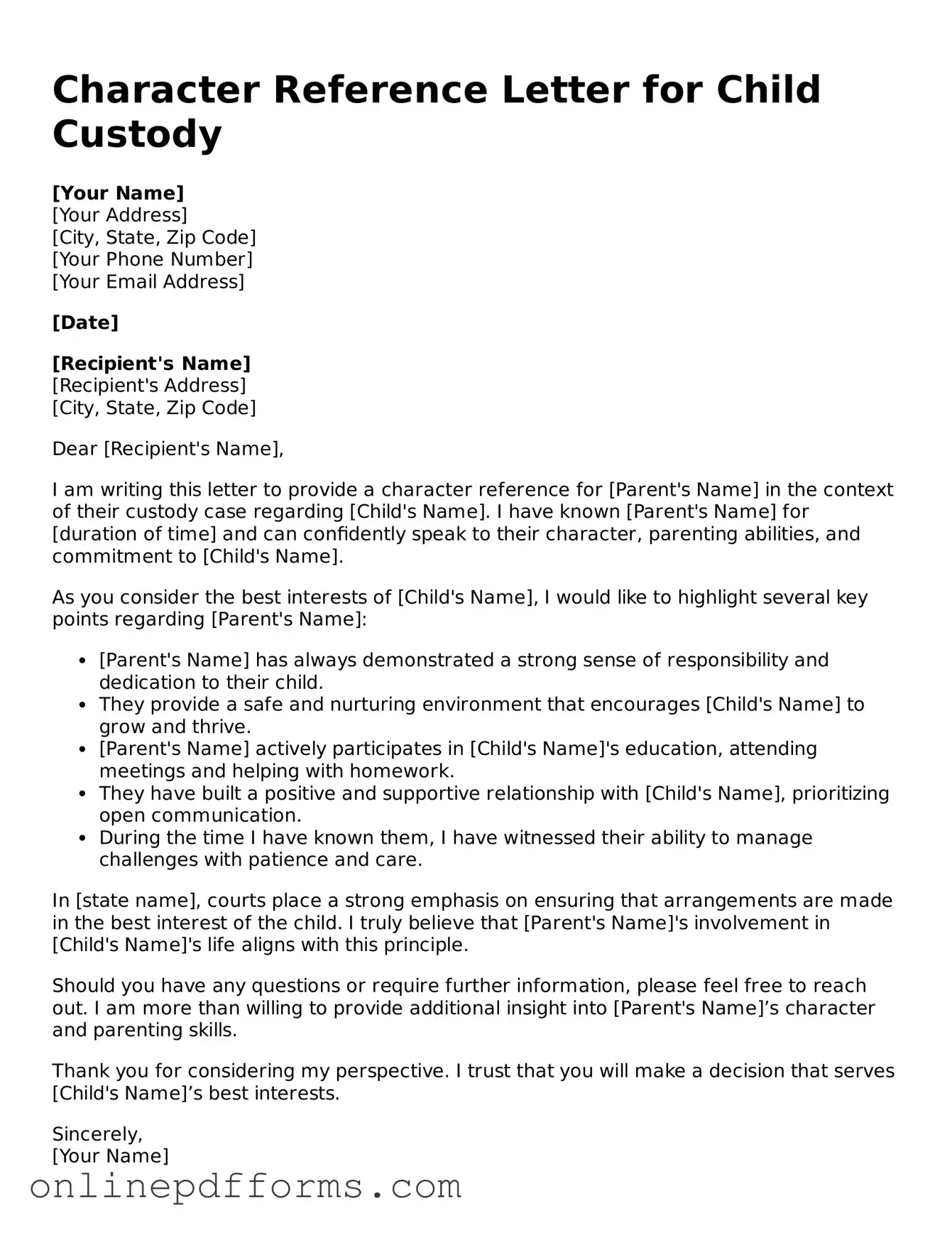A Character Reference Letter for Child Custody serves a specific purpose in family law, but it shares similarities with a Personal Reference Letter. Both documents aim to highlight an individual's qualities and character traits. A Personal Reference Letter can be used in various contexts, such as job applications or community involvement, where the writer vouches for someone's reliability and integrity. Just like in a custody case, the writer emphasizes the positive attributes of the individual, providing context and examples that illustrate their character. This helps the reader understand why the person is a suitable candidate for the role or situation at hand.
When considering various documents to support an individual's character in legal matters, it's also valuable to explore resources like the Recommendation Letter form, which can be found at https://fillable-forms.com/blank-recommendation-letter/. This form can aid in presenting a comprehensive endorsement of a person's qualifications and virtues, particularly beneficial in contexts such as custody cases where demonstrating character and parenting capabilities is essential.
Another document that aligns closely with the Character Reference Letter is the Recommendation Letter. Often used in academic or professional settings, a Recommendation Letter provides insight into a person's skills and abilities. In the context of child custody, the writer may draw parallels between the individual's parenting capabilities and their professional attributes. Both letters seek to establish credibility and support the individual's case, whether for a job or for custody rights. The writer's endorsement can significantly influence the decision-making process in both scenarios.
A Support Letter is also quite similar. This type of letter is often used to show backing for an individual during a challenging time, such as a legal proceeding or personal crisis. Like a Character Reference Letter, a Support Letter highlights the individual’s strengths and provides reassurance about their character. In custody disputes, the writer's testimony can help paint a fuller picture of the parent’s ability to provide a loving and stable environment for the child. Both documents aim to foster trust and confidence in the individual being supported.
Moreover, a Statement of Support is another document that shares common ground. This statement typically comes from friends, family, or community members who can attest to a person's character. In the context of child custody, such statements can be crucial in demonstrating the parent’s commitment to their child’s well-being. Just as with a Character Reference Letter, the focus is on providing a narrative that illustrates the individual's positive traits and parenting style, thereby influencing the custody decision.
Lastly, a Witness Statement can also be compared to a Character Reference Letter. While a Witness Statement is often used in legal contexts to provide factual accounts of events, it can also include observations about a person’s character. In custody cases, witnesses may describe their interactions with the parent and how they engage with their child. Both documents aim to provide a credible account that supports the individual’s case. The key difference lies in the focus: Character Reference Letters emphasize personal qualities, while Witness Statements may include more factual observations.
